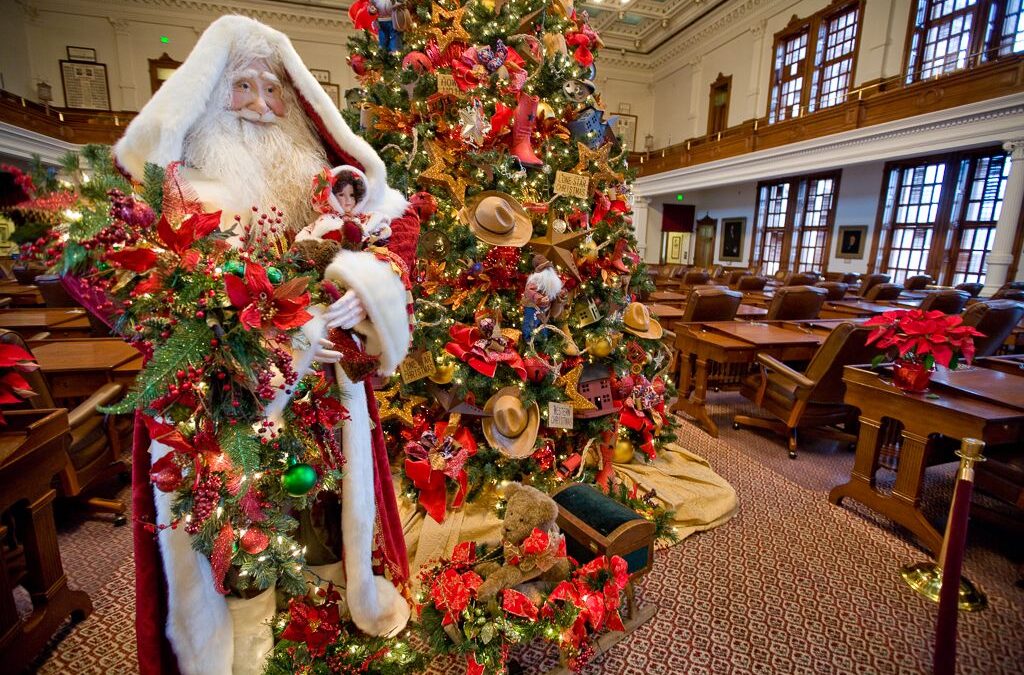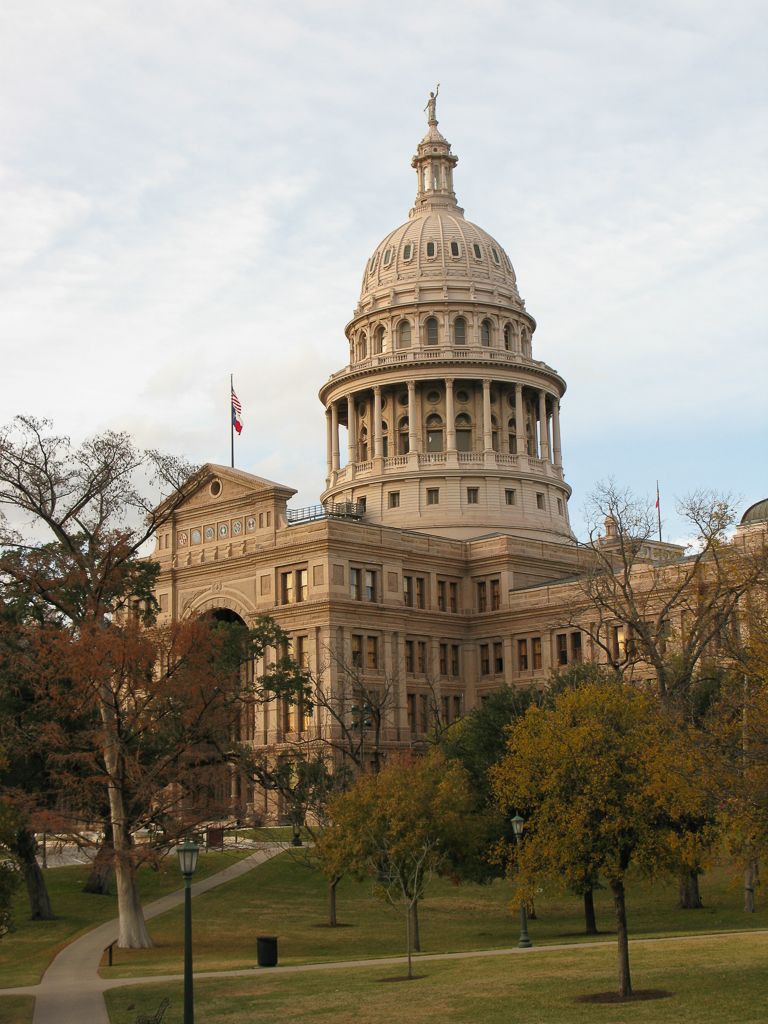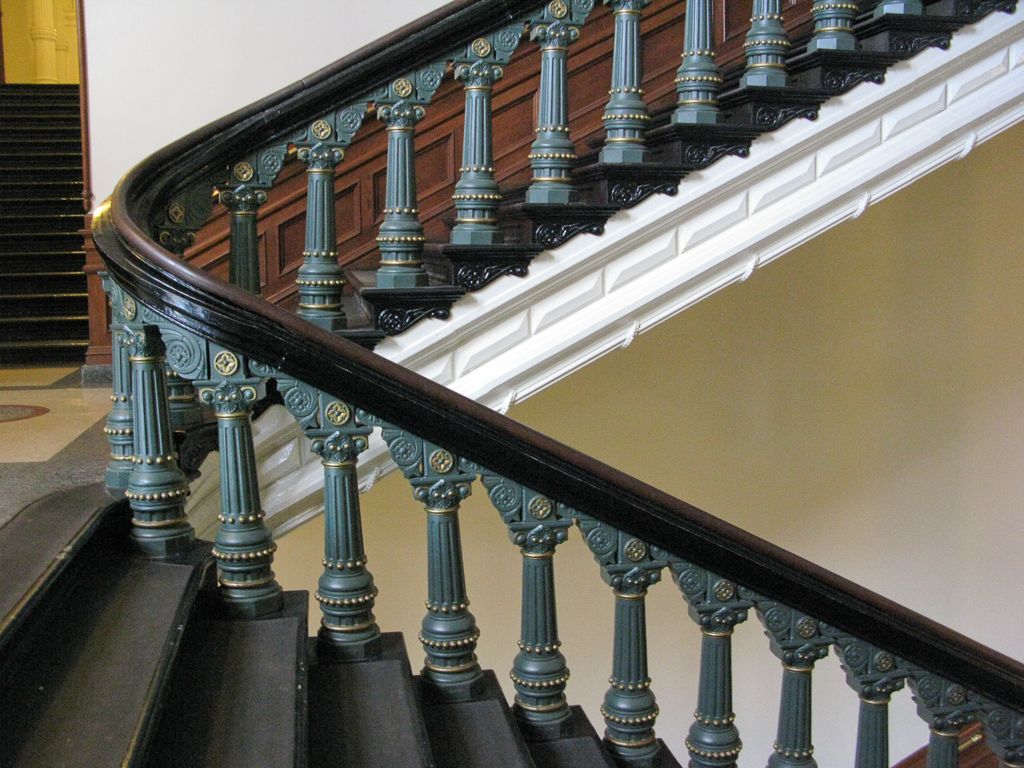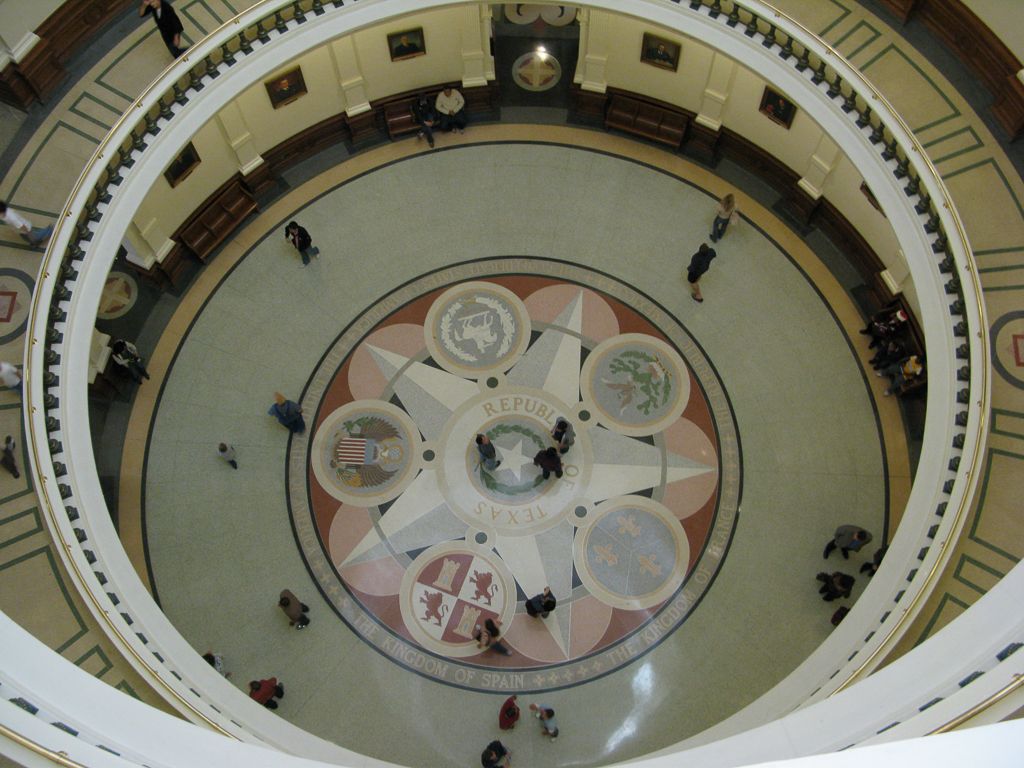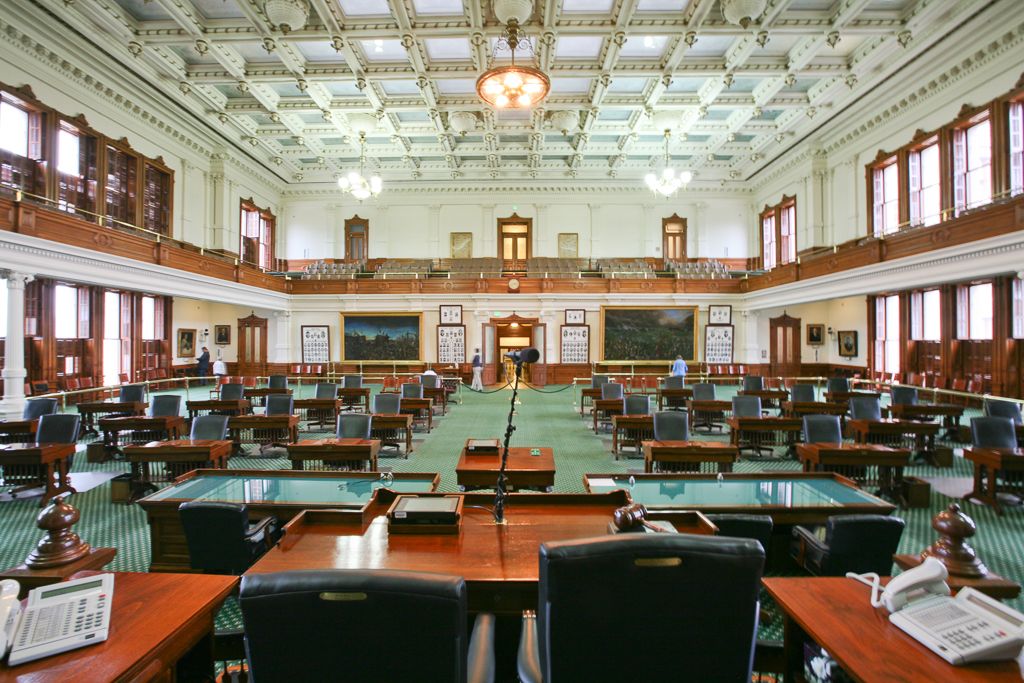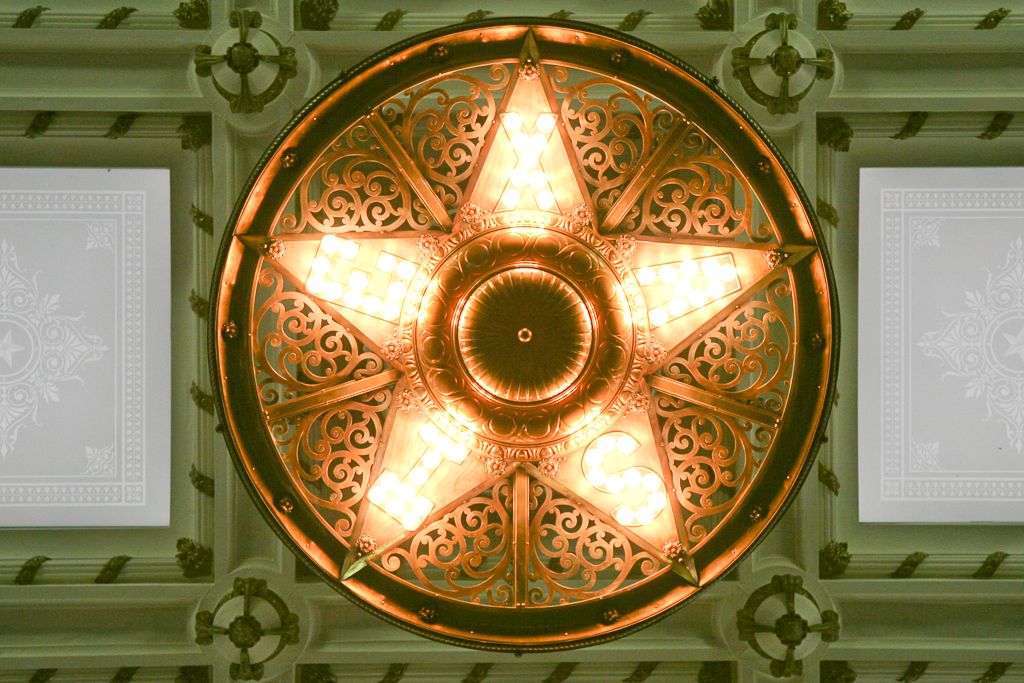The Capitol Complex is in the heart of downtown Austin and one of the most visited attractions in the state. The Capitol building dominates the Austin skyline and is visible for miles, especially approaching from the south. Free tours, which last about 45 minutes, begin in the South Foyer every 45 minutes and are available seven days a week, excluding major holidays.
Texas Capitol Facts
The Capitol :
- Was built in 1886 in the Italian Renaissance Revival style with pink granite mined about 50 miles from the Capitol
- Is the largest state Capitol in the U.S. in square footage. Standing at 308 ft tall the Texas State Capitol is 19 feet taller than the United States Captiol which is only 289 ft tall.
- Is the fourth building to house the state government of Texas.
- Is surrounded by 22 acres of grounds and monuments
- Beautifully carved wooden doors are hinged with custom bronze hinges. The eight inch by eight inch hinges are inscribed with the words “Texas Capitol” and weigh over seven pounds each.
Texas Capitol Visitor’s Center
As you enter the Capital grounds, the Visitor’s Center is the large castle-like building to the right. The Visitor’s Center is located in the restored General Land Office Building. Built in 1856-57, it is the oldest state office building in Texas. The building opened in 1994 as the Capitol Visitors Center with the goal of educating visitors about the history of Texas. There are several exhibits, as well as travel counselors from the State Department of Transportation to help you plan the rest of your visit.
Plan your visit to the Texas State Capitol
Texas Capitol Historical Marker
Year Marker Erected: 1976
Marker Location: W 11th at Congress
Austin became the capital of Texas Jan. 19, 1840, and this hill was platted as Capitol Square. A modest statehouse built here in the 1850s soon developed structural flaws. The Constitutional Convention of 1876 set aside about 3,000,000 acres of public land to finance another building. This was authorized after the 1850s Capitol burned on Nov. 9, 1881.
Architect E.E. Myers of Detroit won a national competition with his plans for this Capitol. The contractor was Mattheas Schnell of Rock Island, Ill. Basement excavation began early in 1882. Railroads built especially for this project hauled limestone from the Oatmanville quarries in Travis County as well as stone donated by the owners of the Granite Mountain in Burnet County. The 900 workmen on the project included 86 granite cutters brought from Scotland. Charles B. and John V. Farwell, Chicago bankers, funded the construction and were repaid in land in ten panhandle counties, on which they founded the famous XIT Ranch. At dedication ceremonies on May 18, 1888, the Capitol was accepted on behalf of the People by State Senator Temple Houston, son of Texas hero Sam Houston. He called it “a Structure that shall stand as a Sentinel of Eternity”. (1976)

